Trade relationship between two strategic partners: Chile-Germany, a look at the evolution of exports and imports between 2019 and 2020
Published on 03 March 2021
Trade between the South American country and its European peer covers the entire spectrum of their portfolios in a representative way, and the interaction of internal and external demand
Chile and Germany have a historical connection that is evident in the high presence of descendants of Germanic migrants, especially since the 19th century. The development of industries such as brewing, shipyards and tanneries marked the beginning of an exchange between the two countries that has been strengthened over time.
As early as 1951, the Trade Treaty between the Chilean Government and the Federal Republic of Germany indicated the strength of the bond between the two countries under the economic standards of the time, but decades ahead of the free trade agreements (FTAs) that were frequently signed in the 21st century. In the Chilean case, the trend came earlier, and in 1996 the EU-MERCOSUR Framework Cooperation Agreement had already been signed, in force since 1999, and the current relationship was finalized with an FTA signed in 2003 and in force since 2004.
Since then, the movement of goods has been easier and has maintained a relevant level for industry and consumption on both fronts. The following is a review of its evolution in recent years.
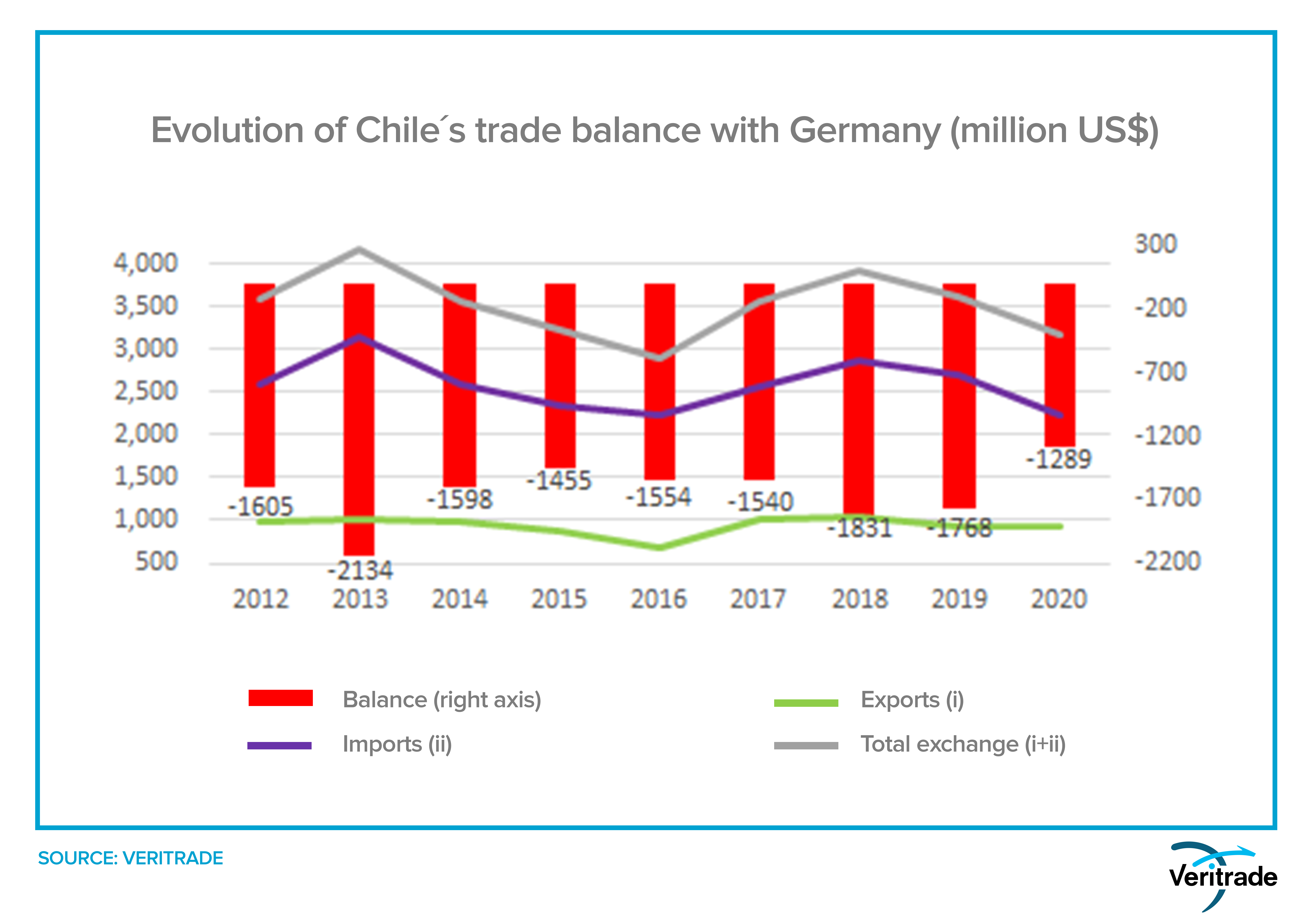
Evolution of the movement
Chilean exports and imports with Germany have had a similar behavior. The main factors that have determined the value have been the evolution of the European Union economy and the price of copper. And the fact that the trade balance is negative does not mean that the trade exchange is detrimental, but rather that there are high value products that are more efficient to import in order to supply key industries, and so that consumers have access to the best quality/price ratios.
The green line, corresponding to exports, has a significant value, amounting to around US $1 billion. Incidentally, this also shows a combination of the difficulty in recovering the German economy from the impact of the crisis in the European Union during 2012 and 2013 and the fall in copper prices between 2014 and 2016. On the import side, the evolution is a reflection of the performance of the Chilean economy, which is more than 10% dependent on the red metal.
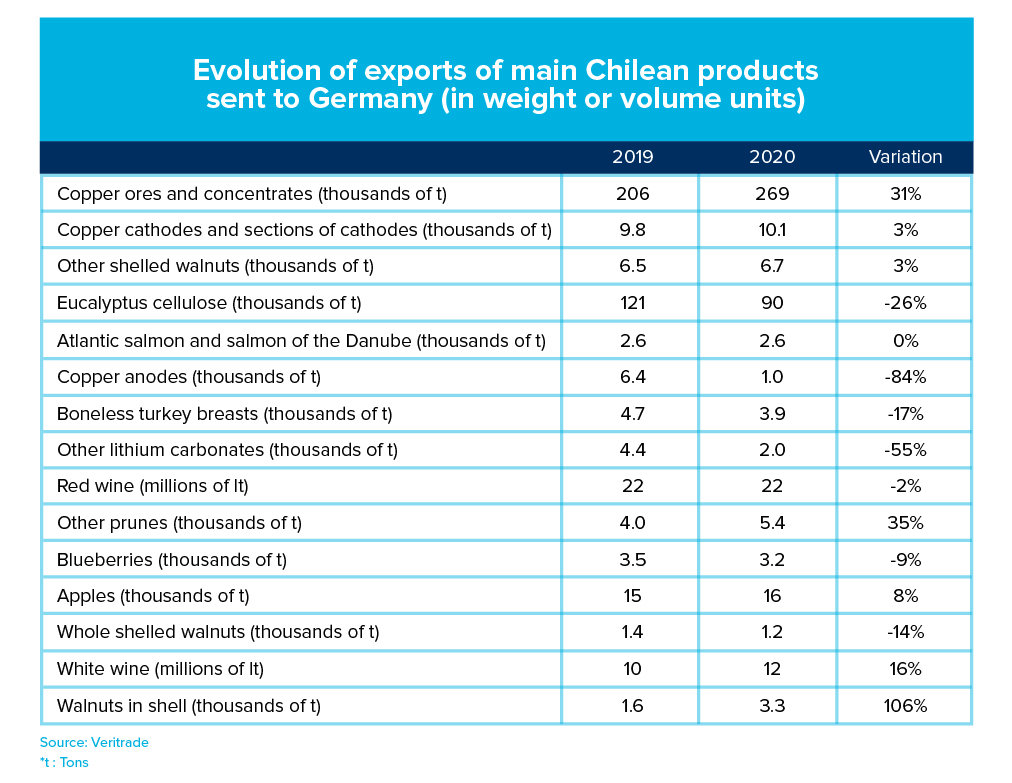
The Chilean portfolio is mainly composed of mining, agricultural, forestry and fishing products. With more seniority in the commercial exchange, there are copper, fruits, wood pulp and salmon. However, Chile has become a crucial point on the map because of the abundance of lithium, the main material for the batteries that store the energy generated by solar panels and used in electric vehicles. Looking ahead, the export supply is covered in the face of different trend changes.
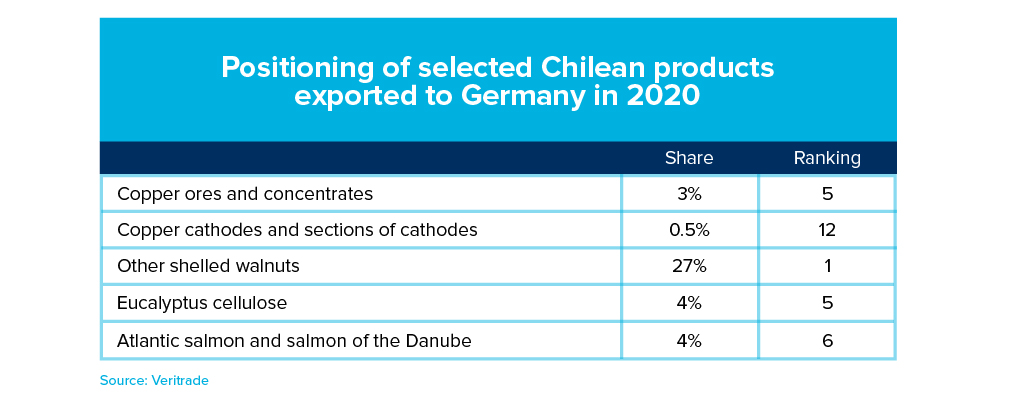
In general, 2020 has been a good year for Chilean exports despite the economic situation. An external factor such as the recovery of copper prices after the reactivation of the Chinese economy was key to this. But at the internal level, the fact of having a diversified portfolio has allowed the drops in exports of food products to be balanced by those of other products that have continued to show growth.
Germany's export portfolio to Chile
On the Chilean import side, Germany stands out as a country specialized in the development of high industrial technology. Its laboratories and development centers are essential for the medical, automotive and energy industries. The list in the following table is just a sample of a huge variety of tariff items linked to these segments.
The mining industry is also supplied with capital goods of German origin, both in earthmoving machinery and ore and milling equipment. Nor can the importance of German dairy products, which are among the most abundant and reputable on the international market, be overlooked.
It is interesting to note that the composition and performance of the portfolio is irregular. Rather than there being one dominant product, the demand for each varies according to the requirements of the mining industry, the health system and consumers. Regarding the latter, the response is notorious in the case of automobiles. Finally, it is worth noting the importance of Germany for the transformation of the Chilean energy matrix, which is increasingly dependent on renewable sources such as wind and solar energy, and must also adapt its distribution networks to the changes.
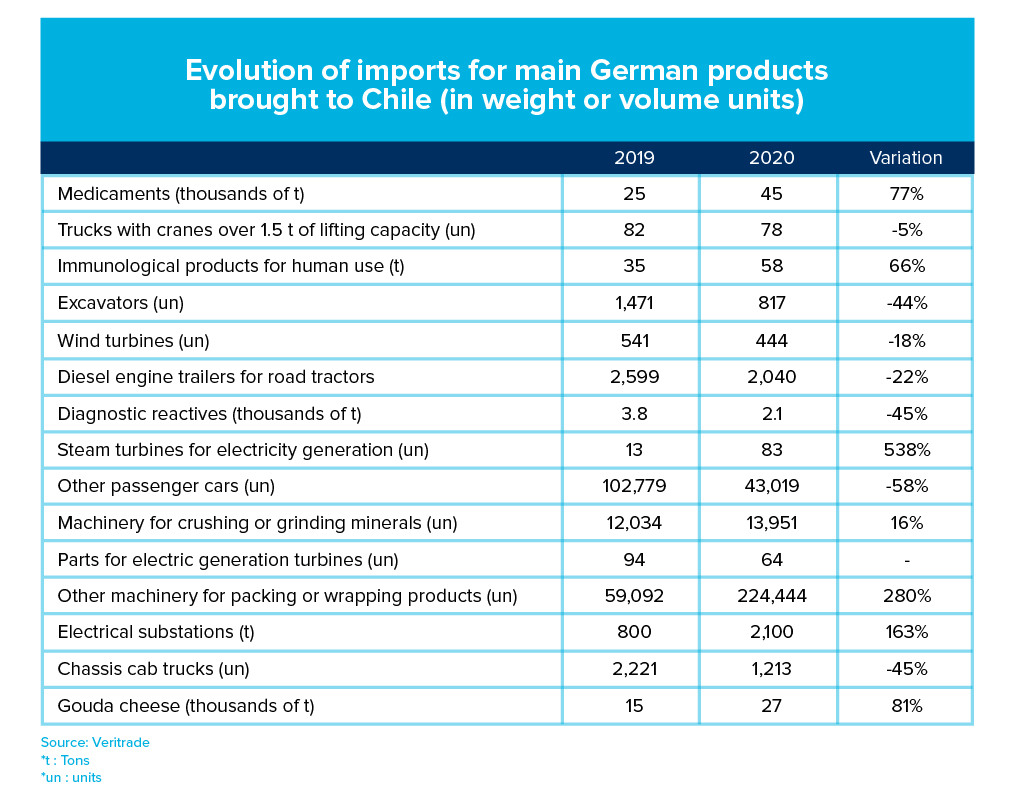
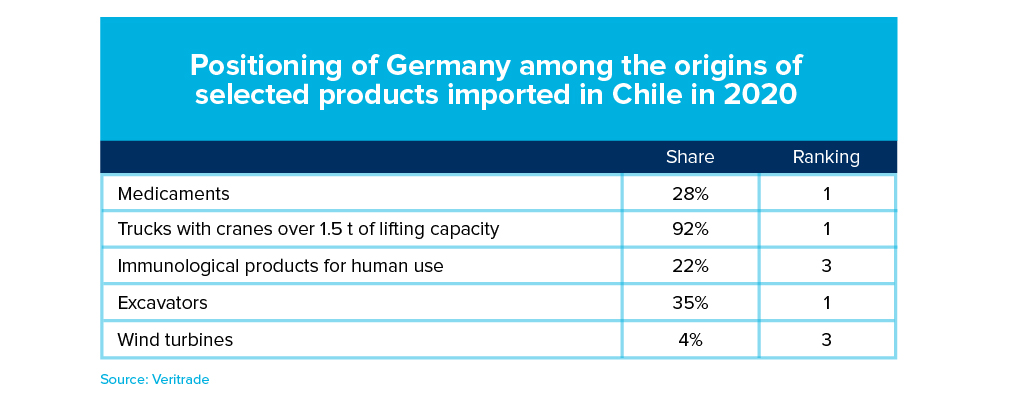
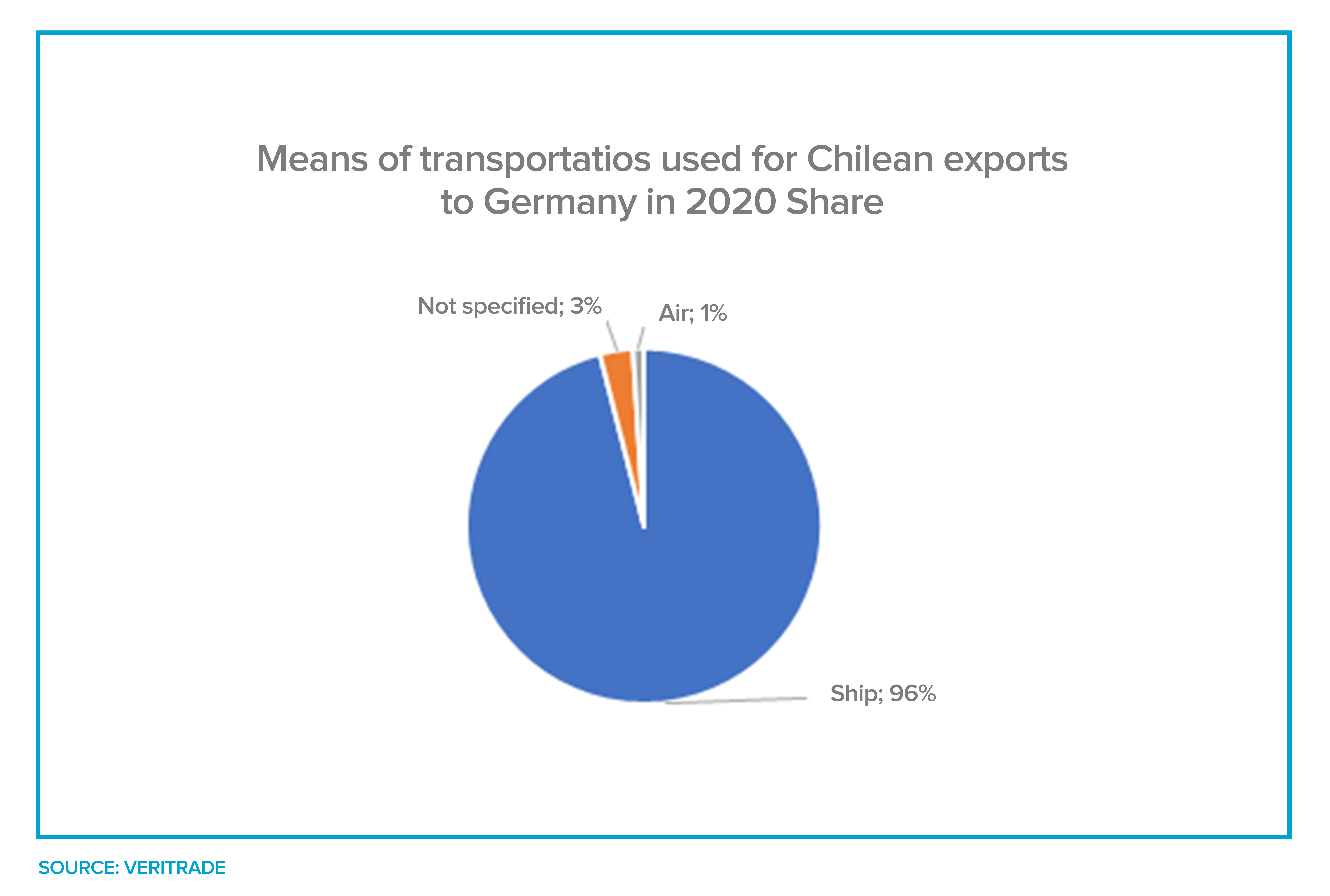
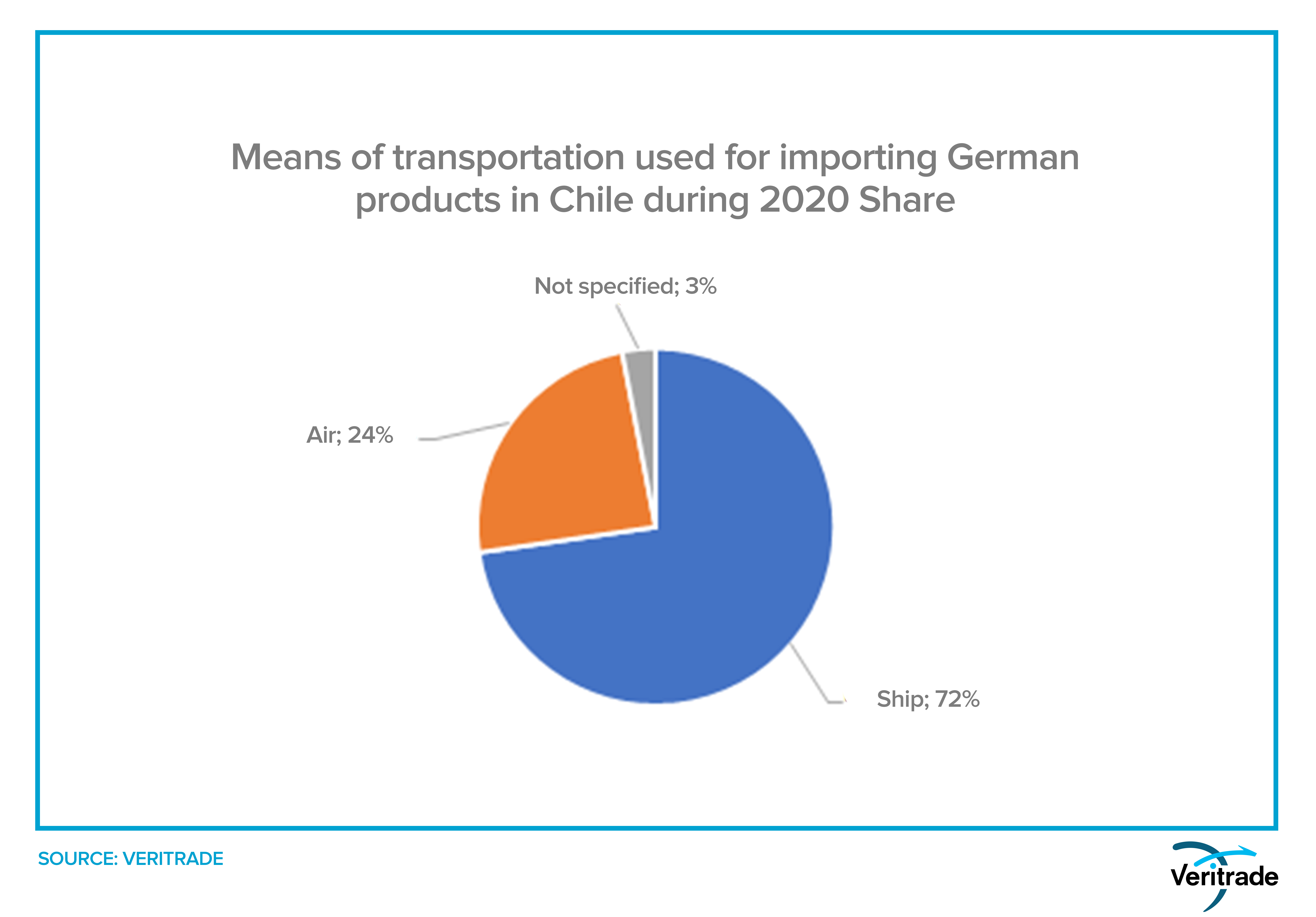
The composition of the Chilean product portfolio exported to Germany is mainly non-perishable, so the use of air transport is minimal. Only some fruit packages such as grapes or premium quality blueberries require direct air transport. In the case of imports, some equipment and, above all, medical supplies require air transport due to their high fragility or immediacy in availability requirements.
Preferred option
Like the rest of the region, Germany is a strategic trade partner for Chile, even more important. The fact that it is the main source of medicines, excavators and truck cranes is a clear example of its preference or even dependence on the health system and the mining industry. On the other hand, Chilean exporters find consumers or clients with high purchasing power for fundamental goods for industries that are key to their country's competitiveness, and have even adapted their portfolio to products traditionally consumed with European origin, such as nuts or wines.
For more information about the commercial exchange between both countries, please visit Veritrade's
Request your free trial by entering https://bit.ly/VRTFreeTrial